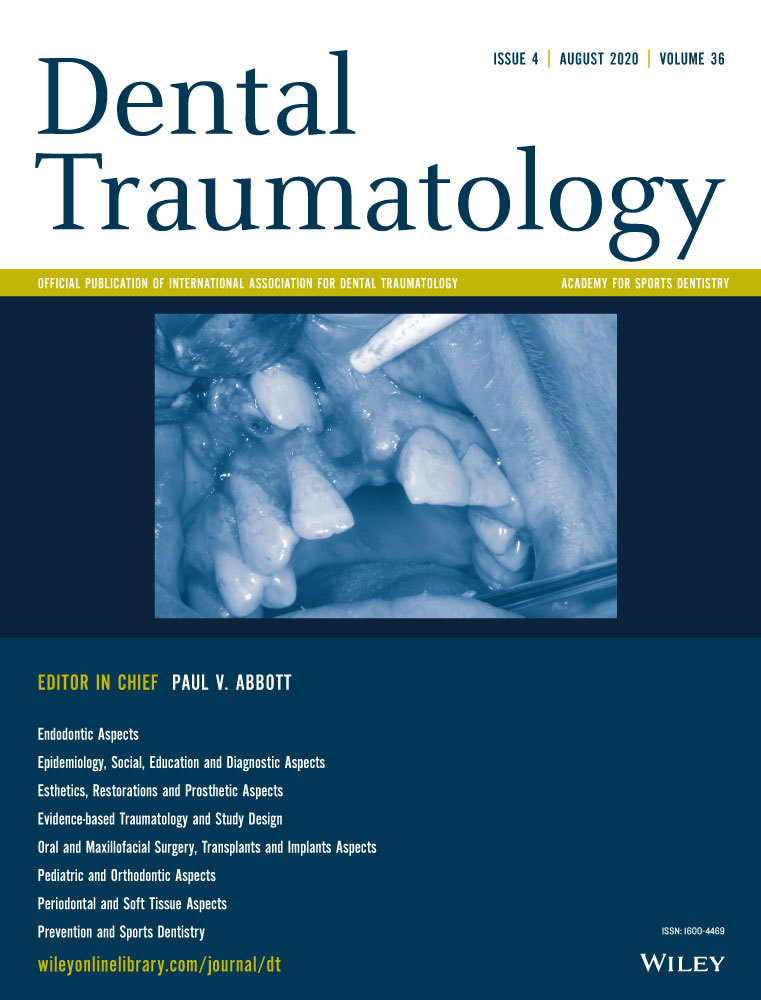Nasopalatine canal and periapical radiolucency fusion following dentoalveolar trauma: A CBCT-based case-control study
Abstract
Background/Aim
There is a lack of evidence regarding the radiological characteristics of a periapical radiolucency (PRL) fusion with the nasopalatine canal (NPC) following dentoalveolar trauma. The aim of this study was to assess the NPC enlargement resulting from fusion with a PRL and its relationship with the surrounding anatomical structures.
Material and methods
A total of 100 patients was retrospectively recruited and divided into two groups: case group and control group. The case group consisted of 50 cone-beam computed tomography scans of the maxilla of patients (32 males, 18 females; age range: 11-83 years) with a known history of dentoalveolar trauma in the maxillary anterior region and the presence of an undiagnosed and/or asymptomatic NPC and PRL fusion. An age- and gender-matched control group of 50 patients (32 males, 18 females; age range: 11-82 years) without trauma history to the upper anterior teeth, demonstrating normal maxillary scans, was recruited. A subjective scoring criterion was established for assessing the characteristics of the fused lesion and its relationship with the buccal/palatal alveolar cortex, nasal cavity cortex, NPC cortical border, and maxillary sinus floor.
Results
The fused NPC and PRL was mainly lobular in appearance (88%) with non-corticated well-defined margins (80%). Male patients showed larger (68%) dimensions compared with female patients (32%). The NPC cortical bone was the most commonly perforated structure in relation to fusion (72%), whereas maxillary sinus cortical bone was the least effected (2%). A statistically significant difference was observed between the NPC dimensions in the control and test groups, with fused lesions having larger mesiolateral, craniocaudal, and buccopalatal dimensions (P < .001).
Conclusions
Periapical radiolucencies should be treated as soon as possible before they fuse with NPC. In case of fusion, surgical enucleation should be considered as the treatment of choice.
CONFLICT OF INTEREST
No potential conflict of interest relevant to this article was reported.




